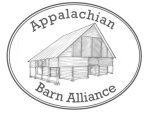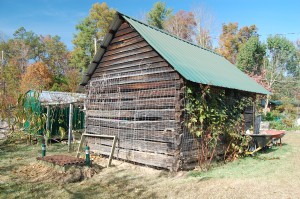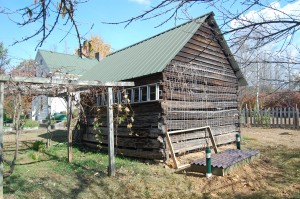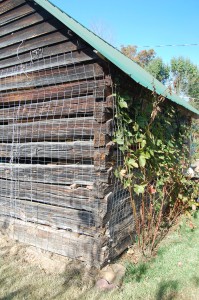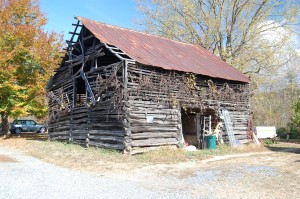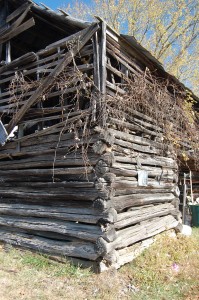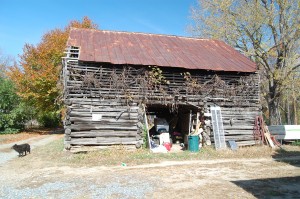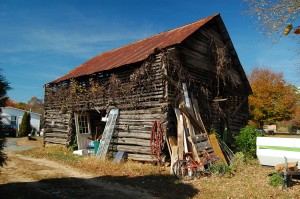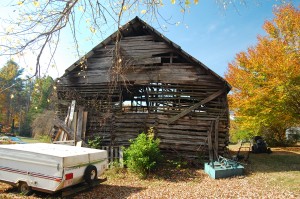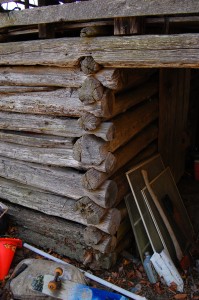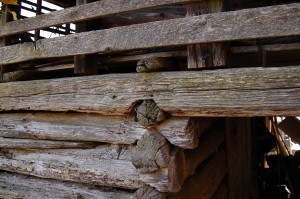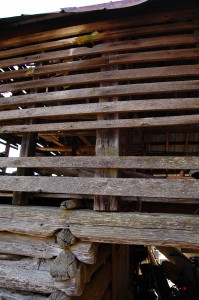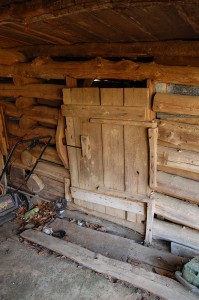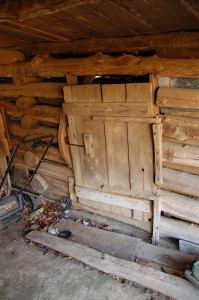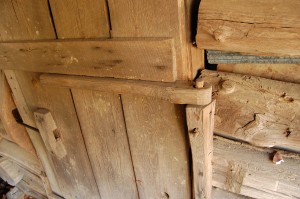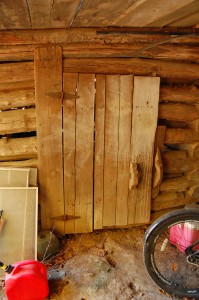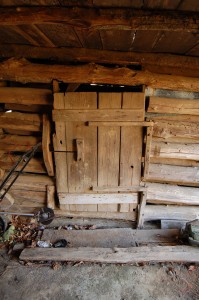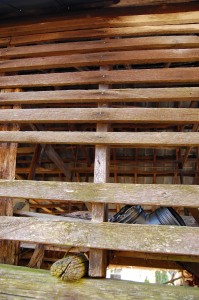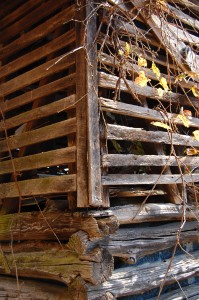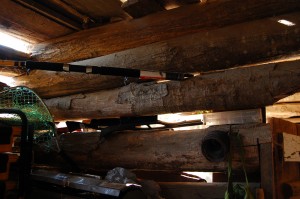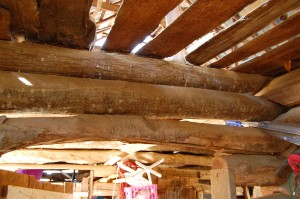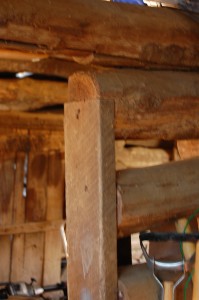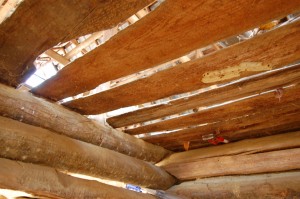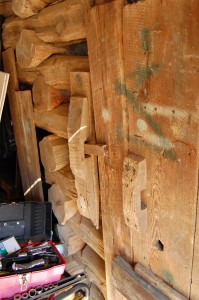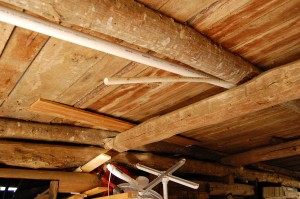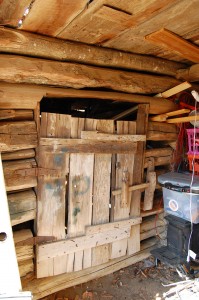Address:
418 Stone Cottage Rd., Mars Hill NC 28754
Year Built: late 1800s
Historic Owners: Jim Phillips, Samuel L. Philips, Dewey Phillips, Bruce Phillips
Description:
This log crib livestock barn is a classic nineteenth century Appalachian barn that pre-dates the era of tobacco in the mountains. Its classic features include hewn log animal stalls with lattice siding on the upper hay loft level. Two of the surviving stall doors have the original hand-made wood hinges. As was common with most early livestock barns, the hay loft was later adapted to air-cure burley tobacco. The farmstead was built by James L. Phillips in the late 1800s; the builder of the house was paid $1 a day for 180 days, plus a mule. James’ son, Samuel Lafayette Phillips, divided the land among his seven children by a lottery. Samuel Phillips’ oldest son Dewey, was a self-taught horticulturalist who grafted new grape and apple tree varieties, many still found throughout the community. He named his grape varieties simply as “red, white, and blue” grapes. Dewey was in the Guinness Book of Records in 1972 for the longest gourd ever grown. He grew dipper gourds and magically tied the necks into knots, and also attempted to cure the chestnut trees of the chestnut blight by graphing. One of his grape vines still climbs the log barn’s wall, having provided grapes for more than a century.
Historic Use: Livestock, burley tobacco
Type of Construction: Sawn lumber, Hewn Timbers, and Notched Logs
Siding Materials: Milled Boards, Lattice, and Exposed logs
Roof Shape: Gable
Roofing Materials: Split wood Shingles and 5-V metal
Roof Framing: Round pole rafters
Foundation: Wood sills on rock piers
Species of Wood: Chestnut and Various Other
Hinges: Wooden and Commercial Metal
Fasteners: Wire nails and Cut Nails
Additional Features:
this is a rare surviving example of carved wood hinges, on two of the six stall doors
grape vine south side of barn
Outbuildings: the original farm had numerous barns, including at least two surviving burley tobacco barns, one built in 1930-31, one of the older burley tobacco barns. A smoke house remains on the property of the old farm house. The smoke houses were always a favorite
NOTE: The information above is an abridged list. For the full unabridged list (complete details), please download the PDF of the Data Form above.
NOTE: These photographs are meant to illustrate various features and construction elements of this barn.
